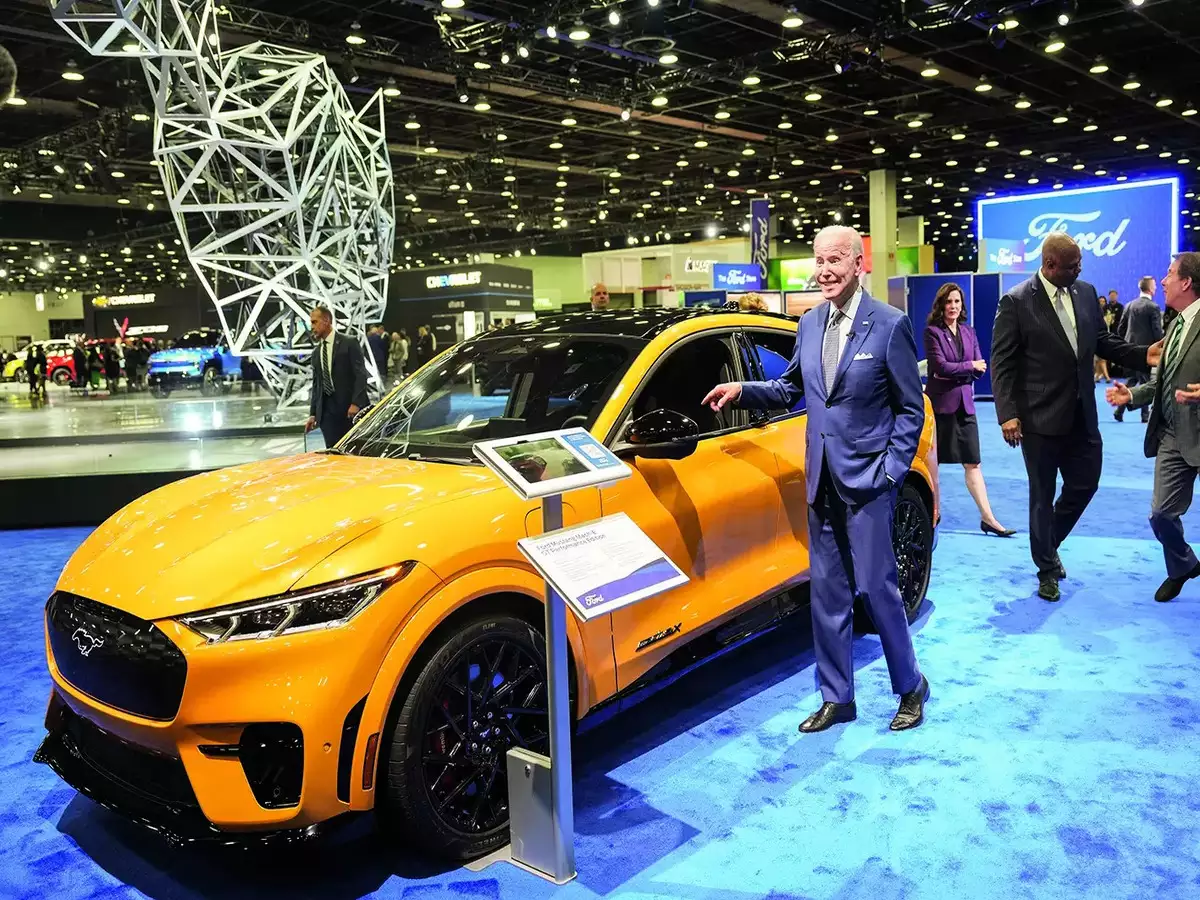
Introduction
The global electric vehicle (EV) market is experiencing rapid growth, driven by increasing consumer demand and government initiatives promoting sustainable transportation. In the United States, Tesla continues to lead the EV market, but competition is intensifying as manufacturers like General Motors and Rivian enter the space. The cost of owning an electric vehicle is becoming more affordable compared to traditional gasoline and diesel vehicles, making EVs an attractive option for consumers. However, challenges such as accessibility and consumer education remain barriers to wider adoption. Despite these hurdles, the percentage of electric cars in the U.S. tripled in 2022 and is expected to surge in the coming years.
Tesla’s Model Y was the best-selling plug-in electric car in the U.S. in 2022, with approximately 243,800 units sold.
Tesla generated nearly $40.6 billion in revenue from U.S. vehicle sales in the 2022 fiscal year.
A total of 625 electric vehicle models were sold in the U.S. in 2022.
Over 1.5 million new EVs were sold across the U.S. and Europe in 2022.
Factors such as subsidies, infrastructure improvements, and gasoline prices continue to influence EV demand.
Electric vehicles are expected to account for nearly a third of all vehicle sales in the U.S. by 2030.
Globally, the market share of electric vehicles is projected to reach about 26% by 2030.
The growth of the EV market is becoming increasingly vital to the automotive industry and the global economy.
The U.S. Environmental Protection Agency classifies electric vehicles as zero-emission cars, though emissions depend on the energy source used for charging.
There are currently about 3 million electric cars in the U.S., representing approximately 1% of all vehicles on the road.
In 2022, automakers produced around 442,000 electric vehicles, marking a significant increase in EV production.
The first quarter of 2022 saw a record 60% increase in EV registrations, with 158,600 registrations accounting for 4.6% of all new car registrations.
Over the past 12 years, more than 2.5 million battery and plug-in vehicles have been sold in the U.S., highlighting the growing popularity of EVs.
The market share of electric cars in the U.S. increased from 2.2% to 6.1% of total vehicle sales by the end of 2022.
This growth is driven by greater awareness of environmental benefits, advancements in battery technology, and the expansion of charging infrastructure.
With more automakers investing in EV development, the percentage of electric cars in the U.S. market is expected to continue rising.
In 2022, the Ford F-Series was the best-selling truck in the U.S., with nearly 654,000 units sold.
The Ford F-Series includes full-size pickup trucks, with the F-150 being the most popular variant.
Light trucks account for two-thirds of light vehicle sales in the U.S.
In 2022, U.S. light vehicle sales totaled around 13.75 million units, with 10.9 million being light trucks.
The global chip shortage impacted the automotive industry in 2021 and 2022, leading to factory shutdowns and a drop in sales.
U.S. customers prefer domestic brands, with light trucks from U.S.-based automakers being particularly popular.
The Ford F-Series, Chevrolet Silverado, and Ram Pickup were the top-selling light trucks in the U.S. in 2022.
Tesla’s Cybertruck has the potential to join the ranks, but production delays have pushed its release to at least two years after its initial target date.
The global e-bikes market is expected to reach around 36.5 million units in 2022.
The e-bikes market is projected to grow at a compound annual growth rate (CAGR) of nearly 10% between 2022 and 2030.
By 2030, the global e-bikes market is expected to reach just under 77.3 million units.
Growth in the e-bikes market is driven by concerns about air pollution, traffic congestion, rising fuel prices, and government incentives.
Europe is the largest market for e-bikes, followed by the Asia-Pacific region and North America.
E-bikes come in various types, including pedal-assist, throttle-assist, and speed pedelecs, with different ranges and power levels.
Major players in the global e-bikes market include Giant Bicycles, Accell Group, Trek Bicycle Corporation, and Yamaha Motor Co. Ltd.
The e-bikes market is also seeing new entrants, including start-ups, technology companies, and established players from other industries.
Top Barriers to EV Adoption:
78% of drivers cited shorter driving ranges compared to gas-powered vehicles as a reason for not purchasing an EV.
73% of drivers find it difficult to locate or plan for charging stations.
73% are concerned about the high cost of battery replacement.
69% find electric vehicles to be expensive.
Top Reasons for Considering an EV:
52% of drivers are attracted to lower or no fuel costs.
50% believe EVs are better for the environment.
41% think EVs are less expensive and require less maintenance than gas-powered vehicles.
27% appreciate the quieter operation of EVs.
27% consider tax credits and incentives as a factor in their decision.
Ford Mustang Mach-E: Third best-selling EV with 39,458 sales.
Chevy Bolt EV/EUV: Fourth best-selling EV with 38,120 sales.
Kia EV6: Fifth best-selling EV with 29,498 sales.
Other top-selling EVs included the Tesla Model Y, Tesla Model 3, Volkswagen ID.4, Audi e-tron, Nissan Leaf, and Porsche Taycan.
The electric vehicle market in the U.S. is expanding rapidly, with Tesla maintaining a dominant position. However, competition is heating up as manufacturers like General Motors and Rivian invest heavily in electric and automated vehicle programs. While challenges such as accessibility and cost perceptions persist, consumer education and government incentives are helping to overcome these barriers and drive EV adoption. As the market continues to grow, electric vehicles are poised to play a central role in the future of transportation.